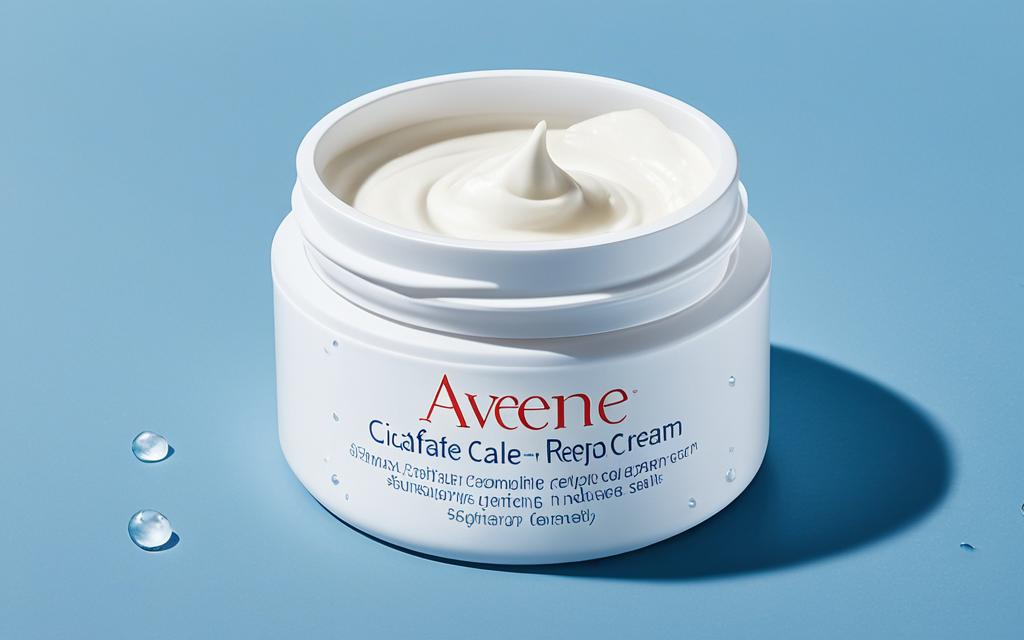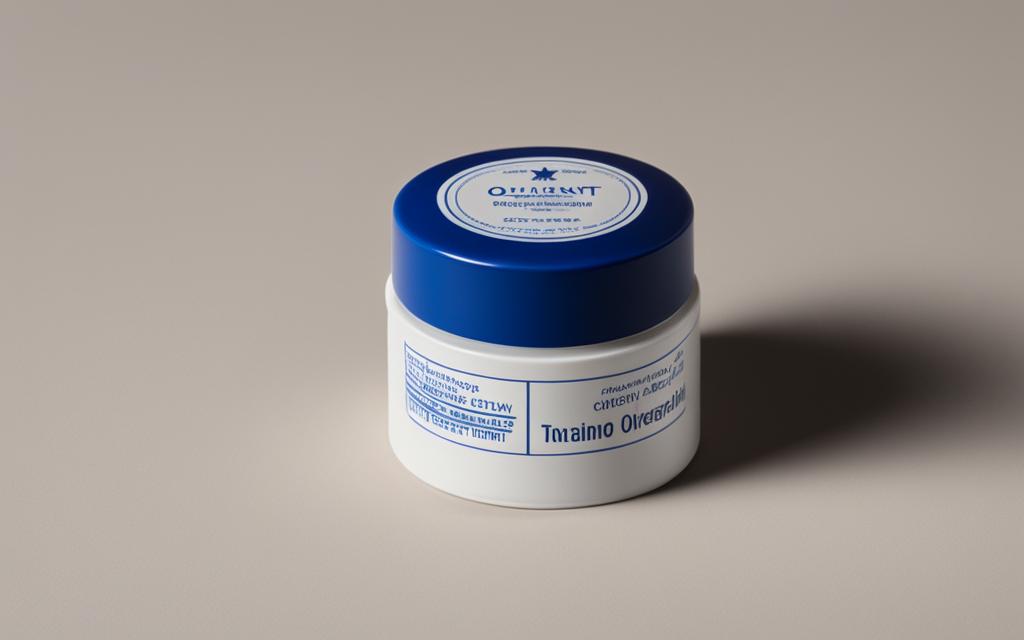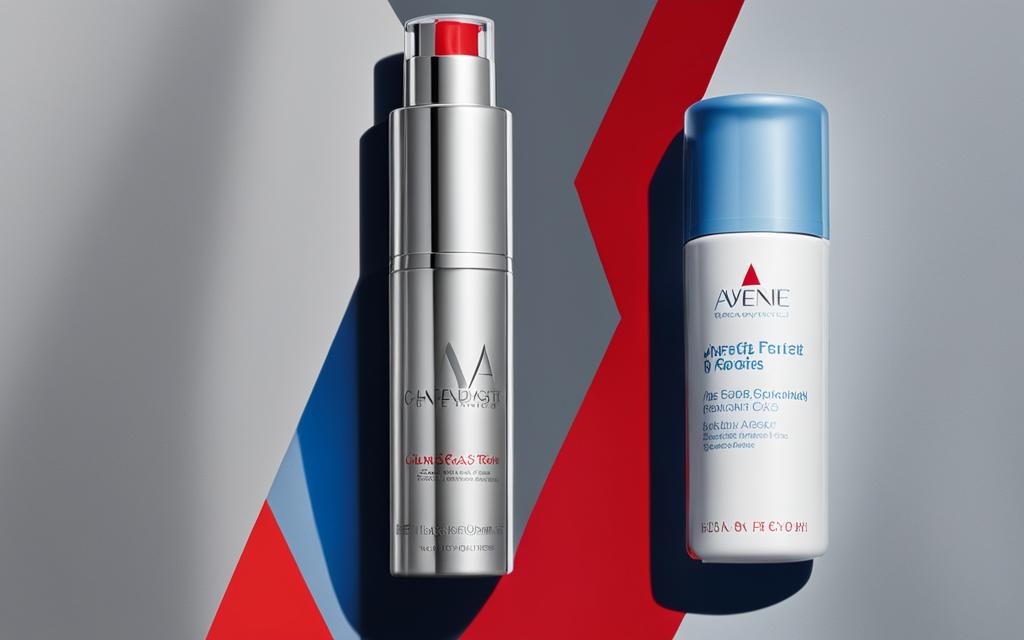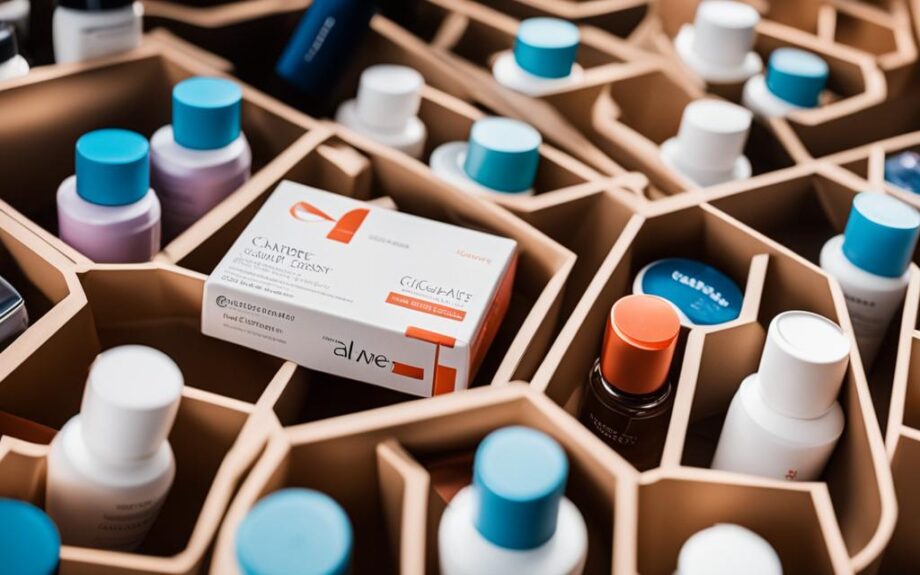Choosing the right skincare can be challenging, especially when faced with numerous options. Avene Cicalfate Repair Cream and La Roche Posay Cicaplast are two renowned skin repair creams that have gained immense popularity. But which one is better for your skin’s needs? In this article, we will compare Avene Cicalfate Repair Cream vs La Roche Posay Cicaplast and explore the features and benefits of each product to determine which one comes out on top.
Key Takeaways:
- Avene Cicalfate Repair Cream and La Roche Posay Cicaplast are popular skin repair creams.
- Both products are known for their ability to soothe and heal damaged skin.
- Each cream has unique features and benefits, making one possibly more suitable than the other for specific skin concerns.
- By the end of this article, you will have a better understanding of which cream could work best for your individual needs.
Avene Cicalfate Repair Cream
Avene Cicalfate Repair Cream is a powerful solution for soothing and restoring damaged skin. This cream contains a unique blend of ingredients that includes zinc oxide and copper sulfate which work together to protect and repair the skin. The lightweight texture of the cream allows for quick absorption and makes it suitable for all skin types.
Avene Cicalfate Repair Cream has been clinically proven to help soothe and repair skin irritations caused by various conditions like dermatitis, eczema, and psoriasis. It also helps to reduce redness and promote healing, making it an excellent choice for those with sensitive or reactive skin.
One of the key benefits of cicalfate repair cream is its ability to restore the natural balance of the skin’s protective barrier. This helps to strengthen the skin’s natural defenses against environmental stressors and infection, ensuring optimal skin health.
How to Use Avene Cicalfate Repair Cream
To get the most out of Avene Cicalfate Repair Cream, it’s essential to follow a few key steps. Start by cleaning the affected area thoroughly and drying it gently with a clean towel. Apply a thin layer of the cream to the affected area and massage it into the skin using gentle circular motions.
You can use cicalfate cream as often as necessary, but it’s recommended to apply it 1-2 times per day. It’s also important to note that while the cream is safe for use on the face and body, it should not be applied to open wounds or mucous membranes.
Are There Any Side Effects?
Avene Cicalfate Repair Cream is generally well-tolerated and doesn’t cause significant side effects. However, some people may experience mild skin irritation or redness upon application. If you experience any adverse reactions, discontinue use of the cream immediately and speak to your healthcare provider.

“Avene Cicalfate Repair Cream has been a real lifesaver for my skin. As someone with eczema and sensitive skin, I’ve tried many creams over the years, and this is by far the best. It calms redness and irritation almost instantly, and my skin feels so much smoother and healthier since I started using it.”
-Jane, 34
La Roche Posay Cicaplast
La Roche Posay Cicaplast is one of the most sought-after skin repair creams in the market. Infused with powerful ingredients like Madecassoside and Procerad, it offers exceptional calming, healing, and strengthening benefits. The cream’s lightweight, non-greasy texture makes it easy to apply and suitable for all skin types.
Cicaplast cream addresses various skin concerns such as dryness, redness, and minor cuts and scrapes. Its reparative properties make it an excellent choice for those with sensitive or reactive skin. With regular use, it can help reduce the appearance of scars and improve the overall health and appearance of the skin.
When it comes to application, a little bit of the cream goes a long way. Apply a thin layer to the affected area once or twice daily, or as needed. One of the limitations of La Roche Posay Cicaplast is that it may not be as effective for more severe skin damage or wounds.

The formulation of La Roche Posay Cicaplast
The unique formula of Cicaplast cream contains a blend of ingredients that work together to provide exceptional healing benefits. Its active ingredient, Madecassoside, is derived from Centella asiatica, a herb commonly used in traditional medicine for its anti-inflammatory properties. Madecassoside enhances the skin’s natural healing process, reducing inflammation and promoting collagen synthesis.
Procerad is another essential component of Cicaplast cream. It helps to repair and strengthen the skin’s protective barrier, preventing future damage and reducing the risk of infection. Additionally, Ceramides in the formulation help to retain moisture and increase hydration levels, leaving the skin feeling plump and supple.
Comparison: Avene Cicalfate vs La Roche Posay Cicaplast
When it comes to the best skin repair creams out there, Avene Cicalfate Repair Cream and La Roche Posay Cicaplast are top of the line. We have analyzed both creams in detail to give you an informed comparison between the two.

Avene Cicalfate Repair Cream
Avene Cicalfate Repair Cream is a lightweight and soothing cream that is formulated to help repair damaged skin. Its blend of ingredients including zinc oxide and copper sulfate provides the skin with the necessary protection and repair it needs to heal. It has a creamy texture which allows it to absorb quickly into the skin and is perfect for all skin types.
| Pros | Cons |
|---|---|
|
|
La Roche Posay Cicaplast
La Roche Posay Cicaplast is a versatile skin repair cream that is designed to tackle a wide range of skin concerns, from dryness and redness to minor cuts and scrapes. Its blend of ingredients like Madecassoside and Procerad offer intensive healing benefits to restore and soothe damaged skin. It has a non-greasy texture that is easy to apply and gets absorbed quickly into the skin.
| Pros | Cons |
|---|---|
|
|
Comparison and Verdict
In terms of effectiveness, both Avene Cicalfate and La Roche Posay Cicaplast work exceptionally well in repairing skin damage and soothing skin concerns. Avene Cicalfate is more expensive compared to La Roche Posay Cicaplast, but it is also more lightweight and perfect for all skin types. In contrast, La Roche Posay Cicaplast is more affordable and versatile, but it can take longer to see results.
Ultimately, the choice between Avene Cicalfate and La Roche Posay Cicaplast boils down to individual preference and specific skin concerns. Both creams have been proven to be effective in repairing and soothing damaged skin, and there is no clear winner.
Conclusion
Choosing between Avene Cicalfate Repair Cream and La Roche Posay Cicaplast can be challenging, as both creams offer unique benefits for repairing and soothing damaged skin.
After a thorough evaluation of their respective formulations, applications, and effectiveness, it’s clear that both creams are exceptional products. Avene Cicalfate is an excellent choice for those seeking a lightweight, fast-absorbing cream that can protect and repair damaged skin. La Roche Posay Cicaplast, on the other hand, offers intensive soothing and healing benefits.
Ultimately, the choice between Avene Cicalfate and La Roche Posay Cicaplast depends on your specific needs and preferences. Regardless of which cream you choose, both are capable of delivering remarkable results.
Thank you for joining us in this comparison of Avene Cicalfate Repair Cream and La Roche Posay Cicaplast. We hope this article has helped you make an informed decision about the best skin repair cream for your individual needs.
FAQ
What are the main differences between Avene Cicalfate Repair Cream and La Roche Posay Cicaplast?
Avene Cicalfate Repair Cream and La Roche Posay Cicaplast differ in their formulation and key ingredients. While both creams aim to repair damaged skin, Avene Cicalfate contains zinc oxide and copper sulfate, while La Roche Posay Cicaplast features Madecassoside and Procerad. Additionally, the two creams may have different textures and applications methods.
Can I use Avene Cicalfate and La Roche Posay Cicaplast on sensitive skin?
Yes, both Avene Cicalfate Repair Cream and La Roche Posay Cicaplast are suitable for sensitive skin. They are formulated to be gentle and soothing, helping to alleviate discomfort and promote skin repair without causing further irritation.
How long does it take for Avene Cicalfate and La Roche Posay Cicaplast to show results?
The time it takes for Avene Cicalfate Repair Cream and La Roche Posay Cicaplast to show visible results can vary depending on the severity of your skin concern. Generally, you may start noticing improvements in the condition of your skin within a few days to a couple of weeks of consistent use.
Can Avene Cicalfate and La Roche Posay Cicaplast be used on acne-prone skin?
It is best to consult with a dermatologist before using Avene Cicalfate Repair Cream or La Roche Posay Cicaplast on acne-prone skin. While these creams may help with overall skin repair, they may not specifically target acne-related concerns. It is important to consider your specific skin type and concerns when choosing a skincare product.
Are Avene Cicalfate and La Roche Posay Cicaplast suitable for use on the body?
Yes, both Avene Cicalfate Repair Cream and La Roche Posay Cicaplast can be used on the body. They are designed to address and repair damaged skin, making them suitable for application on various areas of the body, including dry patches, minor cuts, and irritated skin.
